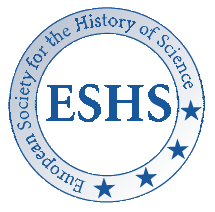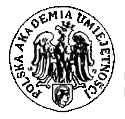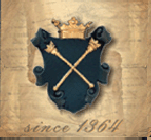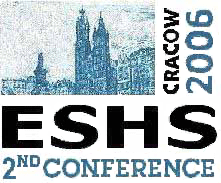Last modification: 25 September 2008
Online Book of Abstracts - A Thematic List:
SESSIONS / SYMPOSIA
Edited by Michal Kokowski
http://www.cyfronet.pl/~n1kokows/home.html
n1kokows@cyf-kr.edu.pl
Symposium R-16.
THE IBERIAN WORLD AND THE MODERN SCIENCE:
A COMPARATIVE PERSPECTIVE
ORGANIZER AND CHAIRMAN OF THE SYMPOSIUM:
Víctor NAVARRO BROTONS (Valencia, Spain)
Victor.Navarro@uv.es
R-16.
Astrological prophecies and the Inquisition in the Iberian World
Ana Cecilia AVALOS FLORES (Firenze, Italy)
Ana.Avalos@IUE.it
Tayra M.C. LANUZA NAVARRO (Valencia, Spain)
Tayra.Lanuza@uv.es
One of the distinctive characteristics of the Iberian World during the seventeenth century was the activity of the Inquisition. This activity not only affected religious issues, but also intellectual-scientific matters. Science and other disciplines related to it at the time, such as astrology, were thus not studied and practiced in the same way in those territories where the Tribunal was active and those where it was not. One may ask, for instance, whether astrology declined faster or more drastically within catholic countries, where the Inquisition persecuted those who practiced judicial astrology and censored books on the subject. This presentation will aim to shed some light on the question of the role of religion, and more specifically of the Catholic Church, in certain case-studies related to the practice of astrology. By analysing the Inquisitorial attitude towards different kind of astrological predictions it is possible to understand, partly, how deeply was this institution concerned about the problem of forbidden knowledge.
The analysis of the inquisitorial trials against some men who were accused of being astrologers, or better said, "judiciary astrologers", makes it possible to understand the actual activity of the Spanish Inquisition against the practice of astrology in Spain during the seventeenth century. Despite the Instructions published by the Inquisition, and the historiographical tradition which underlines that this institution was very active against the discipline, we will argue that the persecution of the practitioners of astrology was not a systematic one, and that the practice of astrology was not one of the main concerns of the Inquisition along the century. We will identify the accusations against those astrologers, and the prophecies that caused certain astrological texts to be forbidden or censured. In their reports about these texts, the censors exposed the reasons why an astrological work was considered as "containing things against the Holy Faith". A closer look to these reports makes it clear that there was not a real consensus on the kind of prophecy which was forbidden and the one which was not. The condemn depended somehow on the personal attitude of the censors. Licit and forbidden practices were always mixed and never defined clearly enough.
Like in Spain, the Holy Office in the New Spain was also confronted against this lack of uniform criteria to discern illicit from licit knowledge. The censors were called to give their opinions on a wide spectrum of astrological predictions: from weather prognostication to political and ecclesiastical prophecies. In this presentation, we will focus on two kinds of predictions, and the inquisitorial attitude towards both of them: on the one hand, prophecies concerning changes of power within religious orders; on the other hand, astrological prognostications by almanac-makers which were somewhere in the middle between natural and judicial astrology.
R-16.
Reacting to external events - Solar eclipses as catalysts of the Portuguese astronomical development in the second half of the nineteenth century
Vitor BONIFÁCIO (Aveiro, Portugal)
vb@fis.ua.pt
Isabel MALAQUIAS (Aveiro, Portugal)
imalaquias@fis.ua.pt
Joao M. FERNANDES (Coimbra, Portugal)
jmfernan@mat.uc.pt
The advent of new technologies, namely spectroscopy and photography, and the development of associated research techniques as well as the discovery of a causal link between solar activity and earth phenomena led to an increased interest in the study of the Sun, during the second half of the 19th century. It was also realized that the observation of total solar eclipses could provide important information about the physical constitution of the Sun. Consequently the fleeting minutes of totality were eagerly sought after and several nations organised expeditions to observe them, sometimes to remote locations. The 19th century Portuguese astronomers grabbed the opportunity of observing several solar eclipses either on home soil or in neighbouring Spain. The occurrence of these events led not only to an effort to observe them but also to a tentative to develop local research facilities. There were acquisitions of new astrophysical equipment and various Portuguese scientists traveled abroad to learn new techniques and practises. In the 1870s the Faculty of Mathematics of the University of Coimbra, as a consequence of a previous eclipse expedition, introduced experimental astrophysical teaching in the curriculum of the Practical Astronomy discipline. The Portuguese developments will be briefly compared to other nations experiences, already well documented.
Special attention will be devoted to the information exchanges that occurred between the different local and international scientists involved in the Portuguese solar eclipse endeavours.
R-16.
The Words and Things of Benito Arias Montano
Susana GOMEZ LOPEZ (Madrid, Spain)
susanagl@filos.ucm.es
Benito Arias Montano (1527-1598) is one of the best examples of the great intellectual complexity of Sixteenth century Spain. His life and work moved between erudition and practice, between reformist ideas and political tensions, between a markedly empirical and practical science and neoplatonic and scriptural interpretation of the natural world. He, who was one of the most relevant intellectual personalities of the European context of the period, developed an important part of his thought in close contact with an active group of Spanish physicians, chroniclers and navigators profoundly interested in the new natural American world. He was the main link between them, Clusius and Plantin, who made possible the European editions of the most important Spanish works on natural history. Nevertheless, Montano was also the nexus between this descriptive kind of science and the court of Phillip II at El Escorial, between a natural history strongly oriented to utilitarian goals and a natural history full of biblical symbolism and mystical ideas.
In this paper I propose a reflection on the meaning of these apparently contradictory tendencies and about the causes which led Montano, at the end of his life, to renounce to the empirical study of nature as a way ok knowledge and to defend, instead, the biblical exegesis as the true way of knowing. His Naturae Historiae, published in 1601, proposed a metaphorical study of nature according to which the natural world was a kind of text which true meaning is only accessible starting from the Sacred Scriptures. This option implied a strong denial of the "new", a refusal of the value of novelty in the study of the natural world. In fact, the american nature is absolutely absent in his Naturae Historia. It is very significant that Montano developed these ideas after a period in which, as recent historians have asserted, Spanish science has put the basis of the Baconian strategies in the field of natural history. Few years later, in 1623, Francis Bacon published his Instauratio Magna, a work who contained a lot of themes and problems very near to those expounded by Montano, but with solutions and proposals diametrically opposed to them.
R-16.
Spain and the Low Countries.
Aspects of the scientific relationship in the sixteenth century
Víctor NAVARRO BROTÓNS (Valencia, Spain)
Victor.Navarro@uv.es
All along the 16th century there was an intensive technical and scientific relationship between the Low Countries and the peninsular kingdoms of the Hispanic Monarchy, to a large extent yet to be studied. The political circumstances conditioned this relationship. But, in spite of the adverse ideological and political context, particularly in the last third of the 16th century and the first decade of the 17th century, this relationship was maintained and in some instances was even intensified. The mutual influence and cooperation was especially intensive in the area of botany and materia medica, as well as in that of astronomy, geography and cartography and the art of navigation.
In the present work we focus in the circulation of knowledge in the second group of matters quoted above: astronomy, geography, cartography and the art of navigation. In cosmography (astronomy and its applications, and geography) we want to emphasize in the first place the huge influence on the Peninsula of Gemma Frisius. Concerning the nautical questions, we will describe the influence on the Low Countries of the peninsular tradition and of the works of the Spanish cosmographers, as Pedro Medina, Martín Cortes and Rodrigo Zamorano.
Finally, we deal with the influence of works of the Spanish geographers and cartographers in the Abraham Ortelius' Theatrum Orbis Terrarum. A central figure of our work is Jeronimo Munoz. His cartographical and geographical works were the principal source used by Ortelio to make the map of the Valencian Kingdom. Munoz studied with Gemma Frisius in Louvain. Thereinafter, it was professor of mathematics and astronomy in Valencia and Salamanca. Munoz used the teachings of Gemma Frisius in his geographical activities ; at the same time, he spread them from his chairs of Valencia and Salamanca.
R-16.
Geometrical studies in 17th century Spain and their counterparts in European mathematics
Eduard RECASENS GALLART (Barcelona, Spain)
eduardo.recasens@upc.edu
At the end of the 16th century, European mathematics recovers the Greek past through direct translations from Greek into Latin. There is a special interest in discovering and understanding the works by Apollonius. Vieta, Fermat and Descartes start from considering propositions and problems contained in those Greek works.
Broadly speaking, mathematics in Spain during the 16th and 17th centuries have a utilitarian orientation, they are practised in the exercise of trade, astronomy, cartography, militia, etc., and handbooks written for their instruction develop elemental arithmetic and geometry, and the first rules of algebraic, logarithmic and trigonometric calculi.
The 17th century Spanish mathematics does not develop to the extent that it does in countries such as France and England. Therefore, at the end of the 17th century, nothing about infinitesimal calculus or applications of algebra into geometry in the Cartesian way is yet to be found. In contrast, the same does not apply to the development of modern mathematics in regard to its recovery of the Greek heritage. In this concern, mathematicians such as C.Richard, J.Zaragoza and H.Omerique, inspired by Greek geometry, make new contributions to classical geometry. Richard writes Apollonii Pergaei Conicorum libri IV (Amberes 1655) together with an essay on the restitution of Apollonius' last four books. Zaragoza writes Geometria Magna in Minimis (Toledo 1674), where working with Appollonius' locus II-5, he is inspired to define the concept of "Centrum Minimum,' a point that plays the role of 'Centre of Gravity' defined now in terms of Euclidian geometry and with which he creates 'the barycentric method.' This method leads him to the discovery of G.Ceva's relation four years before him. Omerique writes Analysis Geometrica (1698), where he develops 'the method of analysis' described by Pappos in the Synagoge.
Although little diffused in Europe, these works are of great value both in history and in mathematics. In this paper I shall deal with their key points as well as their connection with other works that were written in 17th century Europe.
R-16.
The Military Academy for Mathematics of Barcelona (1720) and its role in the history of engineering in Spain
Antoni ROCA-ROSELL (Barcelona, Spain)
Antoni.Roca-Rosell@upc.edu
Maria ROSA MASSA (Barcelona, Spain)
m.rosa.massa@upc.edu
Carles PUIG-PLA (Barcelona, Spain)
Carles.Puig@upc.edu
Francesc X. BARCA (Barcelona, Spain)
Francesc.X.Barca@upc.edu
Guillermo LUSA (Barcelona, Spain)
Guillermo.Lusa@upc.edu
In the eighteenth century, a Spanish way of the Scientific Revolution reached its height. Some authors affirmed that there was a militarization of science. In the field of engineering, a military academy was established in Brussels in 1677 that was the model for the creation in Barcelona in 1699 of a new centre. The goal was to organize an Engineering Corps of the State, training its members in a school. This Academy began in 1720, after the War of Spanish Succession. H. Capel considers that the military engineers constituted the most important technological Corps of the Spanish monarchy. Nevertheless, a more in depth study of the contents of the training is needed to understand the role of the Barcelona Academy in the history of engineering in Spain. The training of military engineers was conceived in the framework of "mixed" mathematics, a strong current in the Spanish scientific world. The courses in the Academy followed the textbooks produced by contemporary Spanish authors, such as Tosca. The syllabus included modern scientific development, as is shown in classroom notes or in the catalogue of the library of the Academy.
CAPEL, H. et al, De Palas a Minerva. 1988, Barcelona.
NAVARRO BROTONS, V., Tradició i canvi científic al País Valencia modern. 1985, Valencia.
RIERA, J. "L'Academia de Matematiques a la Barcelona Il·lustrada (1715-1800)", 1975, 2o Congrés Internacional de Historia de la Medicina Catalana.
MUNOZ CORBALÁN, J. M. (coord.) L'Academia de Matematiques de Barcelona. 2004, Barcelona.




